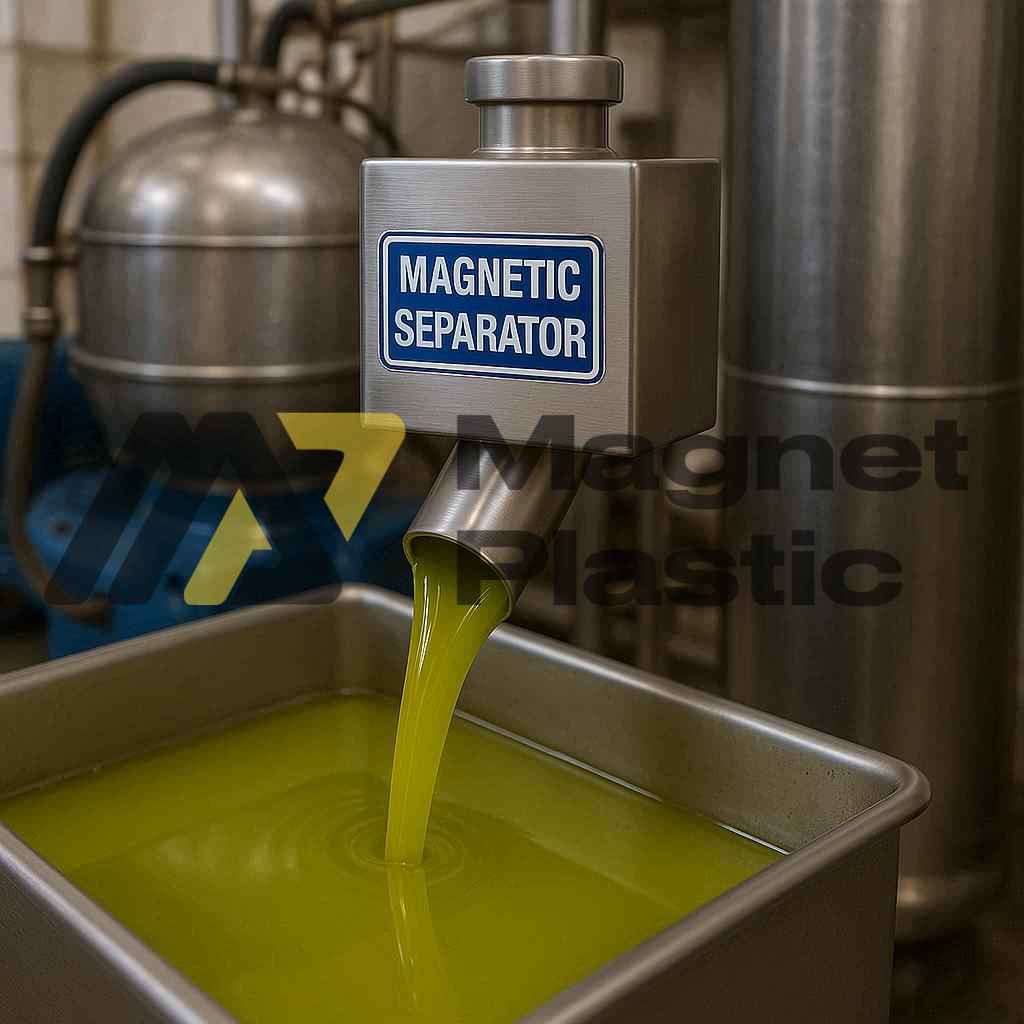Magnetic Separation in Olive Oil Production
1. The Beginning of the Process: Cleaning the Olives
When the olives arrive at the mill, cleaning is one of the first tasks to be carried out. Although some impurities may have been removed in the field using sieves, the fruit still contains remnants of leaves, soil, and sometimes small metallic particles. Therefore, before grinding, the olives go through cleaning and washing systems — and it is precisely at this point that a discreet yet essential element comes into play: the magnetic separator.
2. The Essential Role of Magnetic Separators
Magnetic separators and magnetized grids are used to remove iron or metal particles that might mix with the olives. Their role is twofold: to prevent ferric contamination of the oil and to protect the machinery from potential damage. Screws, wires, nails, or even shotgun cartridges can sometimes be found among harvested olives, and their presence in the mill could cause blockages or costly breakdowns.
3. Ensuring Hygiene and Quality of the Final Product
In the food industry — and especially in olive oil production — magnets play a key role in guaranteeing hygiene, safety, and quality standards. Without these separators, metallic particles could come into contact with the oil, altering its taste, aroma, and stability. Furthermore, rust generated by ferrous materials in the presence of moisture can deteriorate the quality of the final product.
4. Strategic Placement of Magnets in the Mill
Magnets are mainly placed at two strategic points: at the outlet of storage hoppers and at the inlet of the mills. At these locations, magnets or magnetic bars capture metallic particles before they reach the grinding process. To be truly effective, they must be positioned precisely where the olive flow passes — not too far away and not too close to the drop point — as the impact could dislodge some of the attached objects.
5. Types of Magnetic Systems Used
Different types of magnetic systems are used depending on their function and placement. Magnetic plates, for example, are widely used due to their smooth surface, robustness, and durability. Made of non-magnetic stainless steel, they contain permanent magnets with high attraction capacity and an almost unlimited lifespan. In addition, they consume no energy and require no auxiliary equipment, making them an efficient and sustainable option.
6. Magnetic Filtration of the Oil
Magnetic filters are also used during the oil filtration stage. These devices capture metallic impurities present in the liquid, ensuring a purer and more stable product. If the oil is not properly filtered, the remaining solids can retain moisture, cause fermentation, and negatively affect its flavor, aroma, and color.
7. Maintenance and Cleaning of the Magnets
Maintaining these systems is essential. Magnet cleaning should be performed regularly — ideally after processing each hopper — to prevent the accumulation of metallic residues that could reduce their effectiveness. Establishing a protocol for inspection and cleaning is fundamental to ensure process continuity and the highest possible oil quality.
8. Conclusion: A Discreet but Essential Component
Ultimately, magnetic systems in olive mills are a crucial part of the olive oil production chain. Their discreet yet vital role ensures product purity, protects machinery, and helps maintain the excellence that defines extra virgin olive oil.
